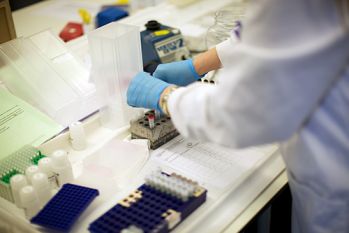Latest News
Please view the latest news articles from across Europe below. Alternatively, filter by news category or search by keyword.
Which Colon Cancer Screening Test Is Best?
Published on�22 September 2016�back to previous
 When it comes to colon cancer screening, there are more choices than ever before. That's the good news, since colorectal cancer is the second leading cause of cancer death in the U.S., and most people should start screening at age 50. The bad news? It's not easy to figure out which screening technique is likely to be the best choice for you. The latest guidelines from the U.S. Preventive Services Task Force, from June 2016, don't help much because they don't present the options in a hierarchy; they simply provide a menu of options.
When it comes to colon cancer screening, there are more choices than ever before. That's the good news, since colorectal cancer is the second leading cause of cancer death in the U.S., and most people should start screening at age 50. The bad news? It's not easy to figure out which screening technique is likely to be the best choice for you. The latest guidelines from the U.S. Preventive Services Task Force, from June 2016, don't help much because they don't present the options in a hierarchy; they simply provide a menu of options. "The best framework is to look at tests that prevent colon cancer and tests that detect colon cancer," says Dr. James DiLorenzo, a gastroenterologist at the Montefiore Einstein Center for Cancer Care in The Bronx, New York. "Colonoscopy is the gold standard: Besides detecting colon cancer, it can prevent 80 percent of colon cancers because polyps can be removed [during the procedure]. Some tests are really geared toward finding a cancer that's already present. While not all polyps will turn into cancer, almost all colon cancers start as a preexisting polyp."
Yet, 1 in 3 adults ages 50 to 75 hasn't been tested for colon cancer, according to the Centers for Disease Control and Prevention. That's unfortunate, experts say, because colon cancer is preventable and easily treatable when it's caught early.
Visualisation Tests
Colonoscopy
With this screening method, the entire rectum and colon can be viewed and any suspicious looking polyps or tissue can be removed during the process. Even when polyps are removed with colonoscopy, "there's strong data that the risk of colon cancer declines by 50 percent over 10 years," says Dr. Carol Ann Burke, vice chair of the department of gastroenterology and hepatology, and director of the Center for Colon Polyp and Cancer Prevention at the Cleveland Clinic. People often worry about discomfort and complications like perforation of the colon but it's a low risk, she says, and pain is not an issue with colonoscopy.
The downsides: Colonoscopy requires a clean-out-the-bowels preparation, with laxatives and fasting for at least a day (clear liquids are allowed). Plus, a sedative is used during the procedure so you'll need to arrange for someone to take you home afterward. If nothing is found, colonoscopy should be repeated every 10 years.
CT Colonography (a.k.a., virtual colonoscopy).
Virtual colonoscopies are quicker and sedation isn't required as it is for a regular colonoscopy but they require the same cleanse-the-bowels (with laxatives) prep. CT colonography is good at finding cancers and larger polyps but not smaller ones, DiLorenzo says. Moreover, the doctor performing the virtual procedure cannot remove any polyps found so a regular colonoscopy must be performed anyway in that scenario. To screen for colon cancer, the test should be repeated every five years. In particular, "it's appropriate when the patient can't tolerate colonoscopy because he or she is on blood thinners or the doctor can't get through with a regular colonoscopy," Burke says.
Because CT colonography exposes people to low levels of radiation, there's concern that this may increase the risk of radiation-induced cancer over time, DiLorenzo says. Also, because it shows the entire abdomen, aberrant lesions or growths outside the colon may be revealed; these may require follow-up imaging tests, such as ultrasound or MRI, to find out whether they're worrisome or harmless.
Flexible sigmoidoscopy.
During a flexible sigmoidoscopy, a flexible tube with a small video camera is inserted through the rectum into the colon and images are displayed on a monitor. While the doctor can view the entire rectum, only the lower part of the colon -- less than half the total length -- can be seen. "It only looks at the left side of the colon -- the most difficult cancers to diagnose and treat are on the right side of the colon," DiLorenzo says. "It's better than nothing but it's largely been abandoned" as a screening tool.
It's a quick procedure (less than 20 minutes) and most people don't need to be sedated for it. The test should be repeated every five years; if it's combined with an annual stool-based test, the interval can be extended to every 10 years.
Stool-Based Tests
The Fecal Immunochemical Test (or FIT).
With this method, a stool sample is taken at home then sent to a lab to be checked for blood, which could signal the presence of cancer or an advanced polyp. It's easy. It's noninvasive. And it's convenient, since there's no need to clear the bowels with a laxative preparation or to have anesthesia.
"It's excellent at detecting colon cancer but less reliable at detecting polyps," DiLorenzo says. This is a concern, especially when it comes to sessile serrated polyps, or SSPs, which tend to be fast growing precursors to as many as one-third of colorectal cancers. In fact, a 2014 study in The New England Journal of Medicine concluded that "FIT appears to have no value in SSP detection." FIT tests should be done every year.
The FIT-DNA test.
"The new kid on the block, this stool test checks for blood in the colon and genetic markers that can be present in people at high risk [for colon cancer]," Burke explains. It's non-invasive and prep-free, and it has a pretty good success rate at finding colon cancer and advanced polyps. But it isn't as good at indicating the presence of smaller polyps.
"It's more sensitive [at picking up colon cancer] than the FIT test but there are also more false positives," DiLorenzo says. A positive result on this test means you're going to need a colonoscopy as a follow-up measure. "All roads eventually lead to colonoscopy if the test results are positive," Burke says. The FIT-DNA test should be repeated every one to three years.
In April 2016, the Food and Drug Administration approved a blood test that can be given at a doctor's office and looks for methylated Septin9 DNA. It doesn't require any preparation, dietary restrictions or changes in medication use. But in a 2014 study, researchers from the University of Minnesota School of Public Health found that the test had a low sensitivity, detecting 48 percent of colorectal cancers.�
The Bottom Line
While a regular colonoscopy is simultaneously a screening procedure and a preventive one (since precancerous polyps that are found can be removed before they turn into cancer), the other techniques are lacking in this respect. Nevertheless, choosing the screening test that's best for you "needs to involve a discussion with your doctor because it depends on your overall health and what's in your best interest," DiLorenzo says. Ultimately, he adds, "the best test is still the test that gets done."
This article was sourced from Yahoo News. Read more here https://www.yahoo.com/news/colon-cancer-screening-test-best-150623614.html




-(2).png)
.png)

